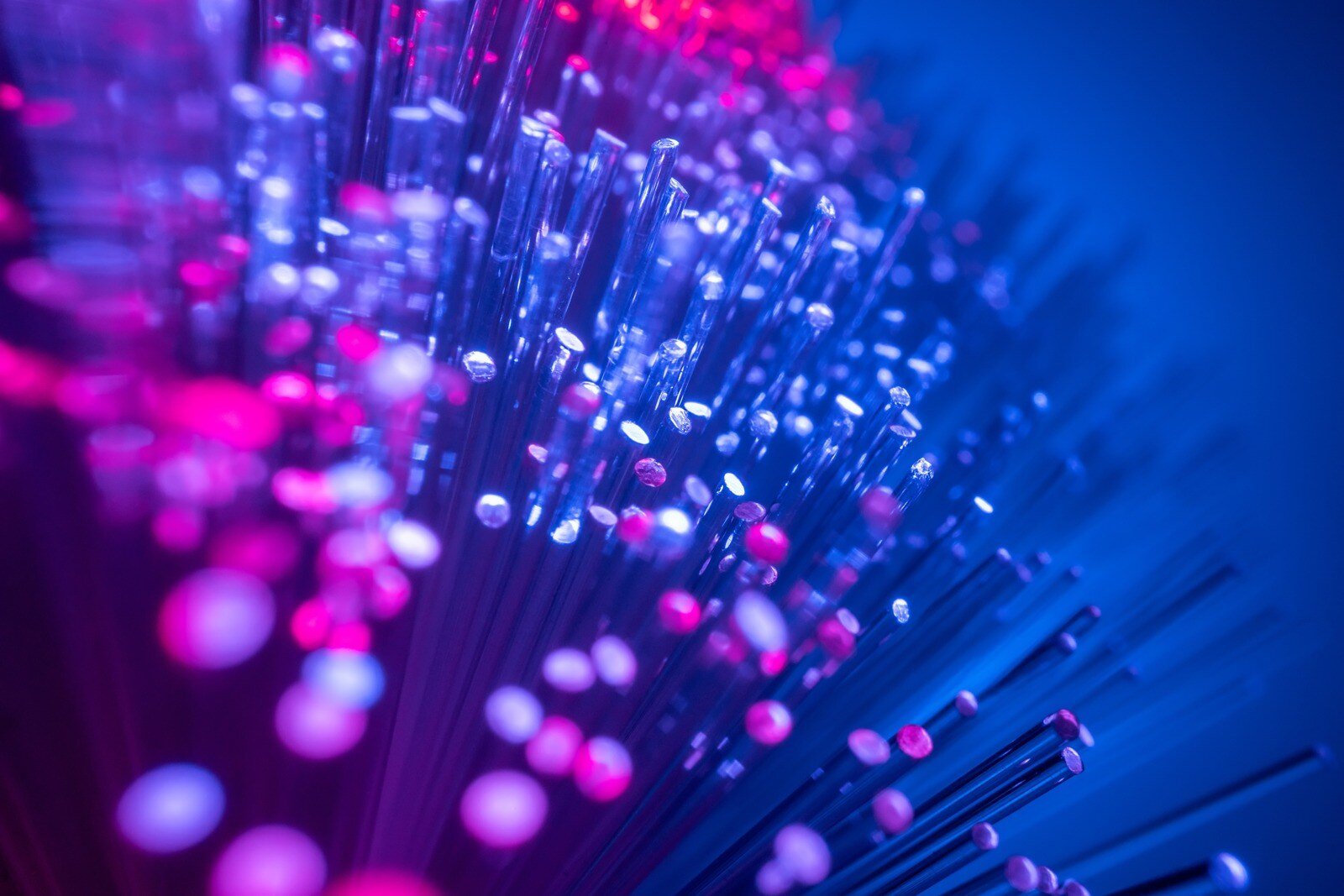Slow internet can bring even the most productive teams to a standstill. Luckily, fiber optic networking solutions like dark fiber and lit fiber offer businesses the speed and reliability needed to stay competitive. But which option is right for your connectivity needs?
Read on to explore the differences between dark fiber and lit fiber and get tips to help you find the best fit for your organization.
What Is Dark Fiber?
Dark fiber refers to unused or "unlit" fiber cables that are installed but not currently active. These cables represent pure potential, which may be why analysts expect the dark fiber market to reach $13.3 billion by 2030.1 Businesses that lease dark fiber take full responsibility for installing the equipment needed to transmit data across the network.

Some features of a dark fiber network include:
- Control: With dark fiber, you can design and manage the network to match your specific requirements, from data routing to performance optimization.
- Scalability: As your business grows, your dark fiber network can easily expand. There's no need to negotiate with service providers or invest in major infrastructure changes.
- Customization: Every business has unique networking needs. Dark fiber allows you to design a network that perfectly aligns with your operational goals.
Dark fiber offers complete control over network infrastructure, making it ideal for organizations with specialized or evolving connectivity requirements.
What Is Lit Fiber?
Lit fiber represents a more straightforward approach to network connectivity. These are fiber optic cables that are already active and managed by a service provider. Instead of building your network from scratch, you're essentially accessing a fully operational communication network.
Some features of a lit fiber network include:
- Managed Service: Lit fiber networks eliminate complex network management. Your service provider handles everything from initial setup to ongoing maintenance.
- Plug-and-Play: Forget about lengthy configuration processes. Lit fiber offers a plug-and-play solution that gets your business online quickly and efficiently.
- Cost-Effective: With fixed monthly fees and no additional equipment investments, lit fiber provides financial predictability for budget-conscious organizations.
For businesses looking for a simple networking solution, lit fiber offers an easy approach to getting high-speed fiber connectivity.

Dark Fiber vs. Lit Fiber: Compared
Here’s how these two fiber solutions stack up across key business considerations:
Control
Dark fiber puts you in complete control of your network architecture. You decide every detail, from equipment selection to security protocols. This level of customization makes dark fiber appealing to enterprises with complex networking requirements.
Lit fiber is a managed service where the provider handles network management tasks like setup, configuration, and monitoring – perfect for businesses that prefer a hands-off approach.
Scalability
Need to expand your network capabilities fast? Dark fiber lets you increase bandwidth without requiring infrastructure changes or permission from a service provider, which is great for growing companies or those with unpredictable bandwidth demands.
While lit fiber offers some scalability, it typically depends on your service provider's available packages. This can potentially limit growth if your business needs higher speeds or capacity.

Cost
Dark fiber requires higher upfront investments since your business must provide and maintain the equipment to "light" the fiber. However, it can deliver long-term savings if you have high or growing data demands.
Lit fiber offers lower initial costs and predictable monthly expenses, making it a more attractive choice for organizations with moderate bandwidth needs and fixed budgets.
Maintenance
With dark fiber, your internal IT team manages network maintenance tasks like troubleshooting, repairs, and upgrades. This requires in-house IT expertise but allows for complete control over performance.
Lit fiber eliminates the burden of maintenance, with the service provider handling these tasks and ensuring network reliability.
Security
Dark fiber is inherently more secure because it operates on a private network, so other users can’t access it. Since it’s a dedicated network, your IT teams can implement proprietary security protocols and encryption.
Lit fiber typically shares infrastructure with other users, which might introduce additional security considerations. However, many fiber providers offer strong security measures to prevent potential data breaches.
Pros and Cons of Dark Fiber vs. Lit Fiber
So which is right for your business internet needs? Here’s a quick comparison of dark fiber and lit fiber to help you decide:

Dark Fiber Pros and Cons
Dark fiber is ideal for businesses that prioritize control, scalability, and security. It allows companies to build private, dedicated networks tailored to their unique specifications. The initial costs can be high, but the investment typically pays off for businesses with heavy bandwidth needs since dark fiber eliminates reliance on external providers for upgrades.
Lit Fiber Pros and Cons
Lit fiber is a practical choice for businesses that need a ready-to-use solution. With its plug-and-play approach, predictable costs, and provider-managed services, lit fiber simplifies connectivity. It’s especially great for small to mid-sized businesses lacking dedicated IT resources or those with consistent and moderate bandwidth requirements.
When Should You Choose Dark Fiber or Lit Fiber?
Deciding between dark fiber vs. lit fiber will depend on your company’s unique network requirements, goals, and resources.
Choose Dark Fiber If…
- Your business needs large-scale bandwidth for data-heavy operations.
- Security is a top priority, and you need a private, dedicated network.
- You have in-house technical expertise to manage your network.
Choose Lit Fiber If…
- You need a straightforward, plug-and-play solution.
- Your bandwidth needs are moderate and likely won’t grow in the near term.
- Predictable monthly costs are important for your budget.
Get the Right Fiber Solution With Fatbeam Fiber
Selecting the right fiber solution isn't just about meeting today's connectivity needs – it's about positioning your business for future success. Whether you choose the flexibility of dark fiber or the simplicity of lit fiber, understanding your options is the first step toward making a well-informed decision.
At Fatbeam, we leverage our leading-class fiber optic backbone network to design commercial business solutions that offer fast, uninterrupted internet connectivity. If you need to stay in control of your network, we have you covered with secure and affordable dark fiber. And if you’re looking for fiber without management headaches, our DIA solutions offer consistent speed and bandwidth, which are supported by our 24/7 NOC.
Ready to see how our fiber solutions can transform your business? Contact us today.
Sources:


